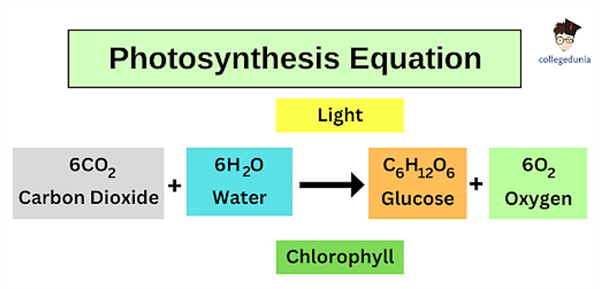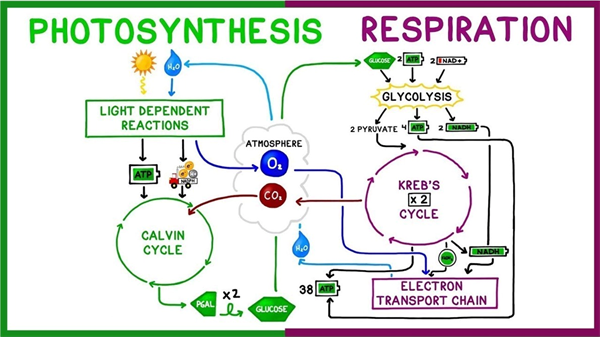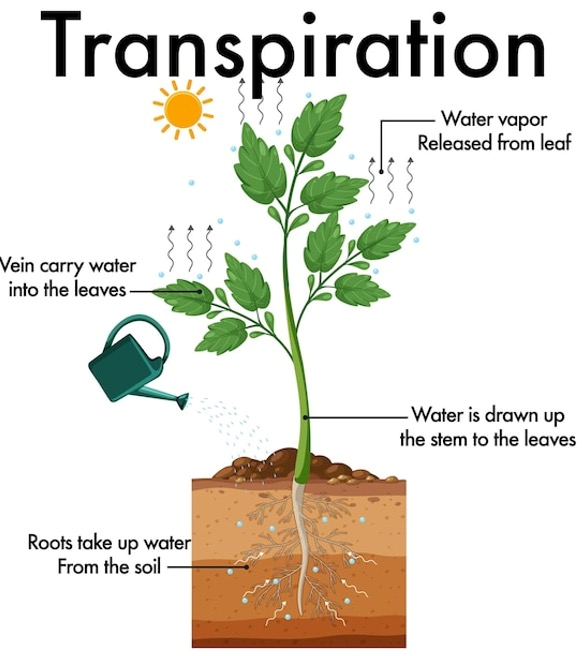Jun 12, 2024
Water and Green Plants - The Backbone of Life
Everything we eat and much of what we are surrounded by in our daily lives have a common base from water and the production of green plants. Anything made of carbon, even if the immediate source of carbon is a petroleum-based product, has an original derivation that starts with green plants and water.
Green plants perform the miraculous process of photosynthesis that captures light energy from the sun to combine with water (H2O) taken up from the soil through the root system, carbon dioxide (CO2) from the air, forming a simple 6-carbon carbohydrate compound (C6H12O6), and liberating free oxygen (O2) into the atmosphere.
Photosynthesis involves a complex system of biochemical reactions, but the fundamental photosynthesis process can be reduced to very simple terms as outlined in Figure 1.

Figure 1. Basic photosynthesis reaction. (Source: Collegedunia).
Figure 2 offers a little more detail in the photosynthetic process and there is still more to the story. But the essentials are outlined in Figures 1 and 2.

Figure 2. Connections between photosynthesis and plant respiration.
The process of taking CO2 from the atmosphere and “fixing” the carbon in a larger and more complex form as a basic carbohydrate (simple sugar compound) is referred to as “carbon fixation” and green plants provide most of this primary function in the earth terrestrial, or land-based ecosystems.
Carbon fixation is conducted by organisms containing chlorophyll and green plants do most of this work. There are also some species of algae and cyanobacteria that can fix carbon from the atmosphere. But green plants, using energy from the water and water from the soil are the real workers in our world in this regard.
Water is essential in this process of fixing carbon through photosynthesis. In fact, six units of water are required for every unit of carbohydrate that is produced (Figure 1).
Additional water is used by the plant in the transpiration process, which is the movement of water from the soil through the root system, through the conductive tissues of the plant. This provides for good cellular hydration and biological function. In the transpiration process water moves out of the plant and escapes into the atmosphere as gas through the stomates, which are small openings in the underside of plant leaves (Figure 3).

Figure 3. Plant transpiration. Source: Premium Vector
Through this process of photosynthesis, water and green plants serve as the backbone of all terrestrial life. These are fundamental facts and critical functions that we manage in crop production systems. Essentially, every field with a green crop growing is a photosynthetic factory and water is always an essential component.
Consumers directly benefit from the water used to produce the crops with all the fruits and vegetables that come from them. Healthy animals require good food, which all comes from plants, i.e., alfalfa. Everything we consume has a significant water footprint and much of that involves supporting plant photosynthesis.
The inescapable fact is that we need the plants, and the plants need water to grow and produce.
To contact Jeff Silvertooth go to:
silver@ag.arizona.edu












